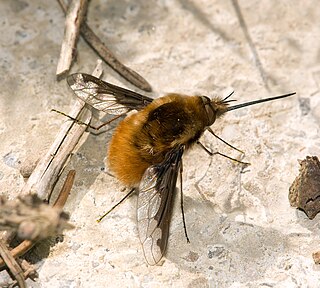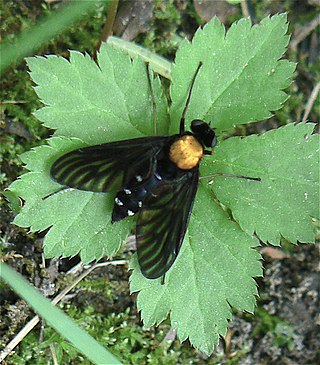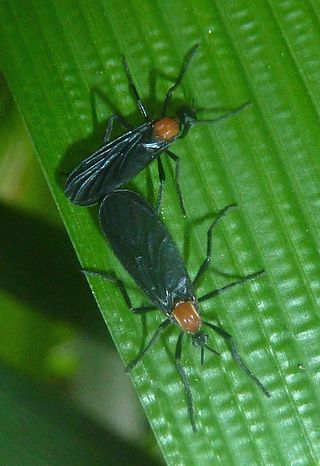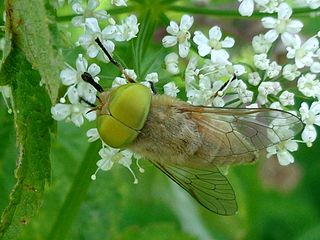
The Bombyliidae are a family of flies, commonly known as bee flies. Adults generally feed on nectar and pollen, some being important pollinators. Larvae are mostly parasitoids of other insects.

Eristalis is a large genus of hoverflies, family Syrphidae, in the order Diptera. Several species are known as drone flies because they bear a resemblance to honeybee drones.

Chrysopilus is common, worldwide genus of predatory snipe flies. There are approximately 300 species in the genus, including fossil members that are sometimes found in amber.

Bibionidae is a family of flies (Diptera) containing approximately 650–700 species worldwide. Adults are nectar feeders and emerge in numbers in spring. Because of the likelihood of adult flies being found in copula, they have earned colloquial names such as "love bugs" or "honeymoon flies".

Rhagio is a worldwide genus of predatory snipe flies. Several species in this genus are referred to as downlooker or down-looker flies because they sometimes perch on tree trunks in a head-down position. There are approximately 170 species. They can be distinguished from other rhagionids by the open anal cell on the wings and the lack of a kidney-shaped arista.

Villa is a genus of flies belonging to the bee-fly family (Bombyliidae). They range in size from 5 to 17 millimetres, and have typically rounded heads. The males of some species have a brilliant mat of silvery patagial scales. About 270 Villa species are found on all continents except Antarctica. They can be distinguished from similar genera (Hemipenthes) by their wing venation.

Nephrotoma is a genus of crane flies.

Penthetria is a genus of March flies (Bibionidae).

Plecia is a genus of March flies (Bibionidae) comprising many species, both extant and fossilised.

Atylotus is a genus of horse flies in the family Tabanidae.

Cordilura is a genus of dung flies in the family Scathophagidae. There are more than 90 described species in Cordilura.












